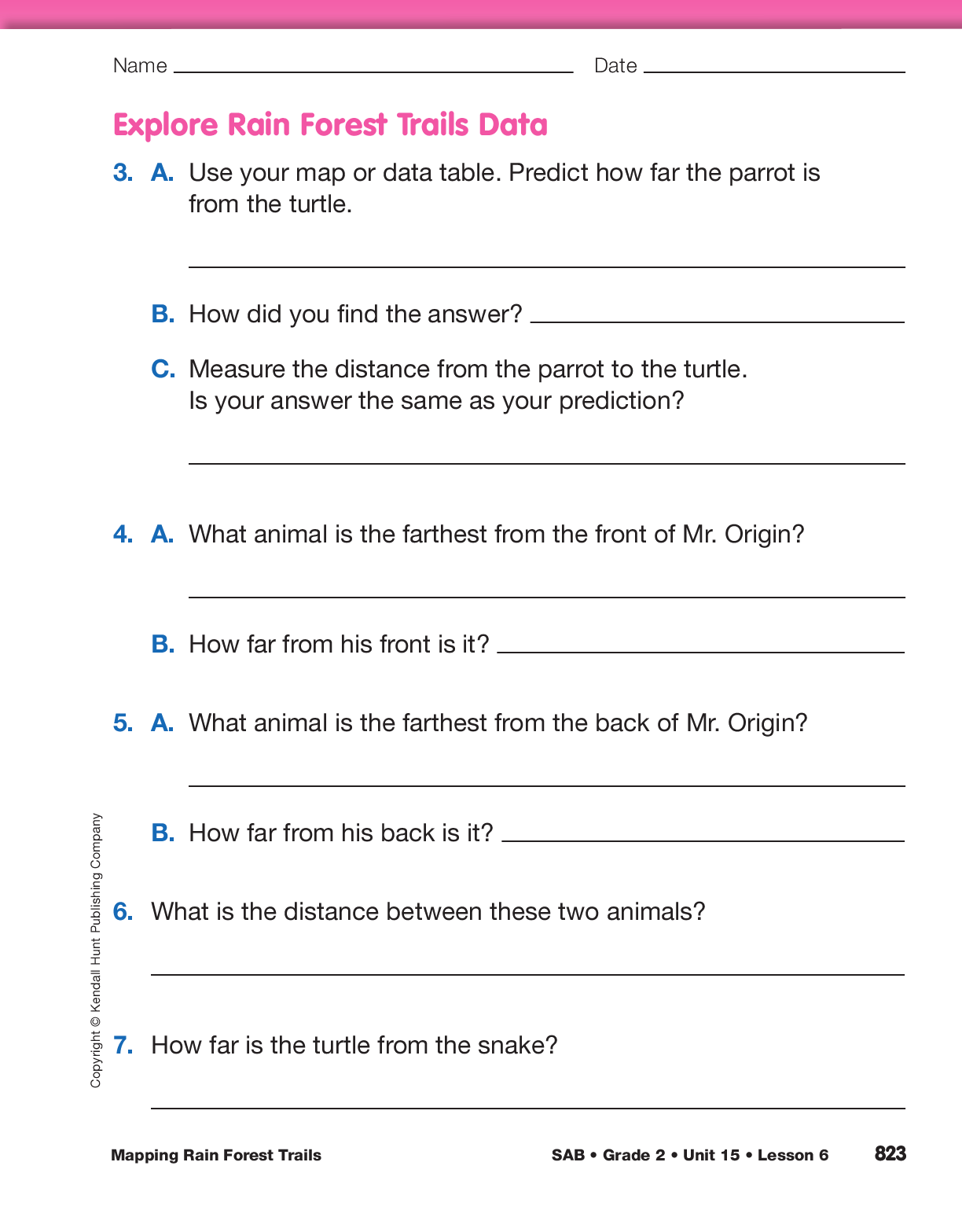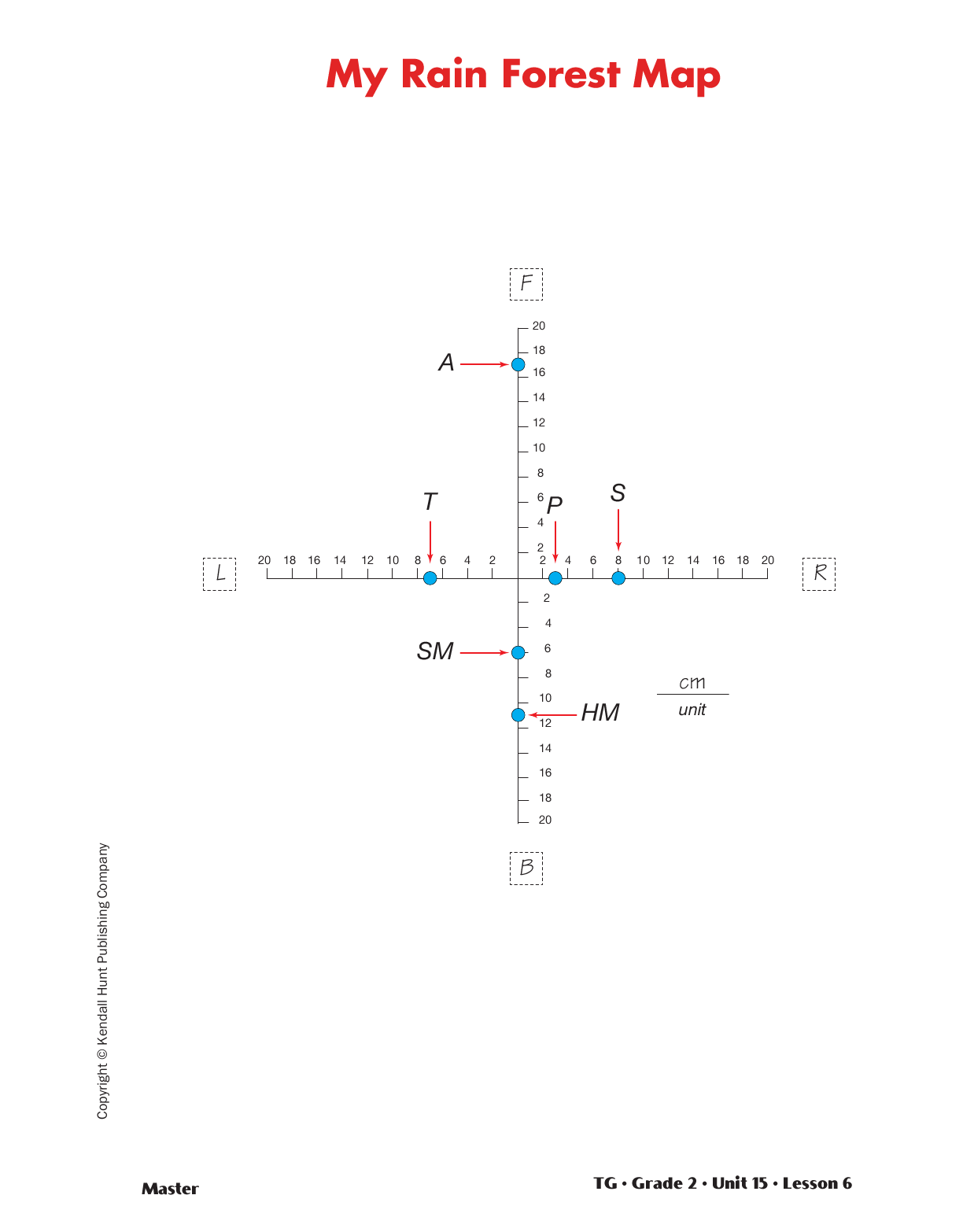As students finish their maps, ask them to work in their groups to answer Questions 3–7 in the Explore
Rain Forest Data section of the Mapping Rain Forest Trails pages in their Student Activity Book. Ask each
group to share their responses and strategies for answering the questions.
Upon completion, display the My Rain Forest Map
Master. This map represents the data shown in
Figures 2 and 3, and in your display. Pose additional
addition and subtraction problems using these or
similar questions.
- Is the howler monkey in front of the spider monkey
or in back of it? (It is in back of the spider monkey.) How did you decide? (Both the spider monkey
and the howler monkey are in back of
Mr. Origin. The spider monkey is closer to
Mr. Origin, so the howler monkey is in back of
the spider monkey.)
- How far is the howler monkey from the spider
monkey? (5 centimeters)
- What strategy did you use to decide? (Possible
response: I counted up spaces by twos and then
counted on one: 6, 8, 10, 11.)
- What is a number sentence that shows the distance
between the howler monkey and the spider
monkey? (6 + 5 = 11 or 11 − 6 = 5)
- How far is the spider monkey from the armadillo? (23 centimeters)
- Explain how you found the answer. (Possible
response: I counted 6 centimeters to get to the
origin and then counted another 17 centimeters to
get to the armadillo.)
- What number sentence shows how you found your
answer? (Possible response:
6 + 17 = 23 centimeters)
- John wrote the number sentence 7 + 8 = 15 centimeters
to describe the distance between the turtle
and the snake. What do each of the numbers in
the number sentence mean? (The 7 describes
how many centimeters the turtle is to the left of
the origin. The 8 describes how many centimeters
the snake is to the right of the origin. When
you add seven to eight you get 15 centimeters to
show the total distance between the turtle and the
snake.)
- If he stays on the trails, how far would the turtle
have to go to get to the armadillo? (24 centimeters)
- Explain how you found your answer. (Possible
response: First the turtle would go 7 centimeters
to get to the origin and then he would turn to the
front and go 17 more centimeters.
7 + 17 = 24 centimeters.)
For additional practice, make displays of the maps
completed by each group. Continue with similar
questions that relate to the maps of different groups.














